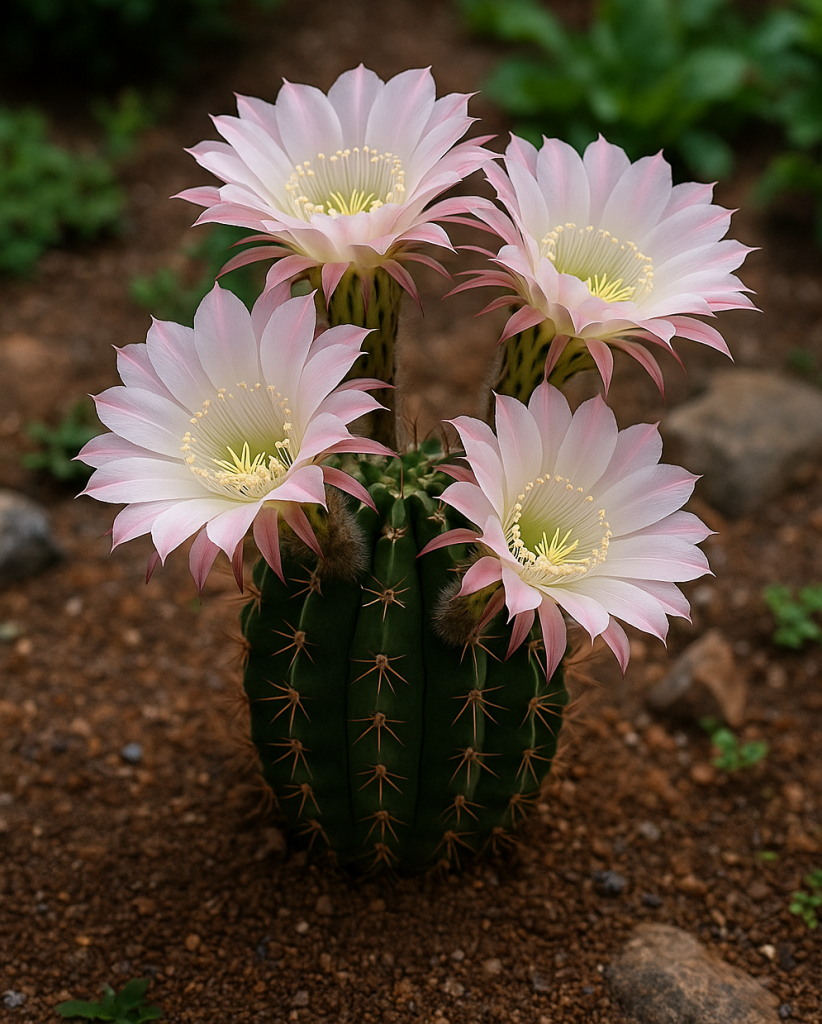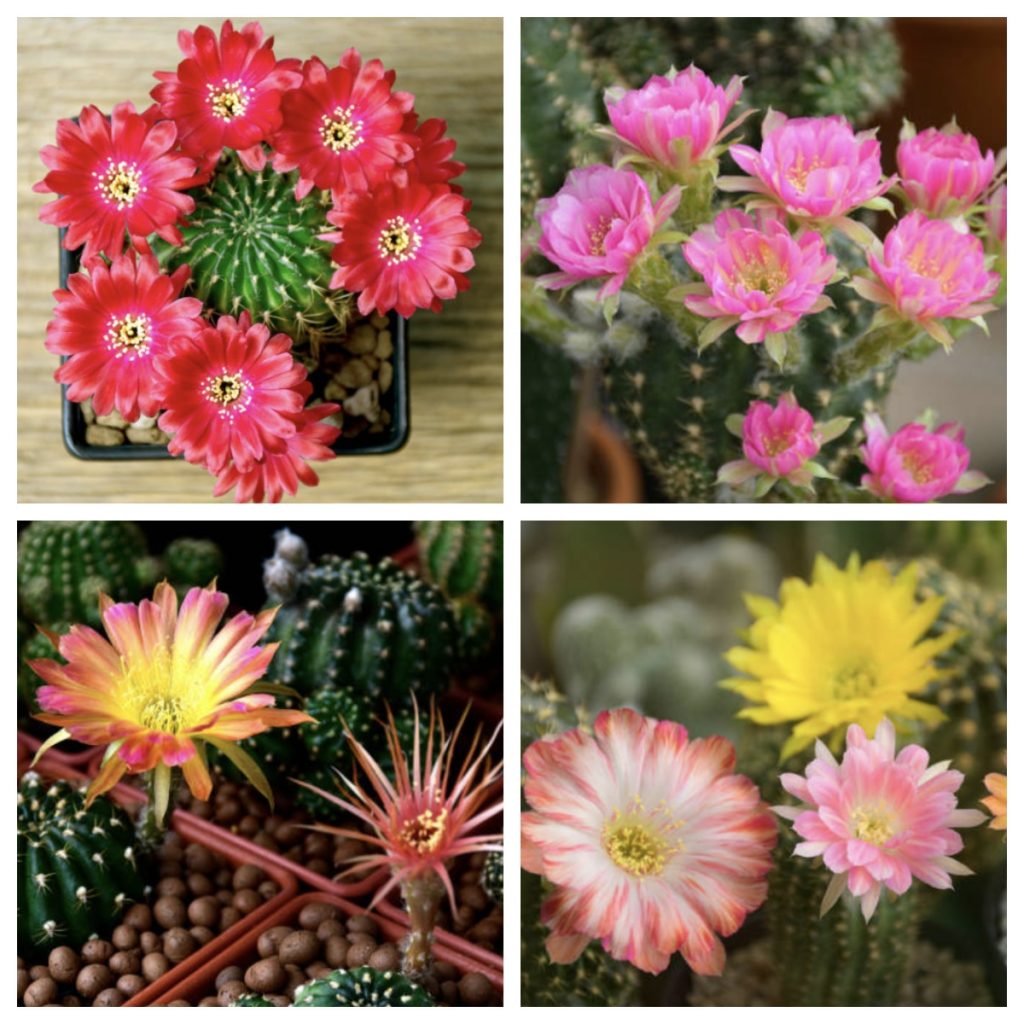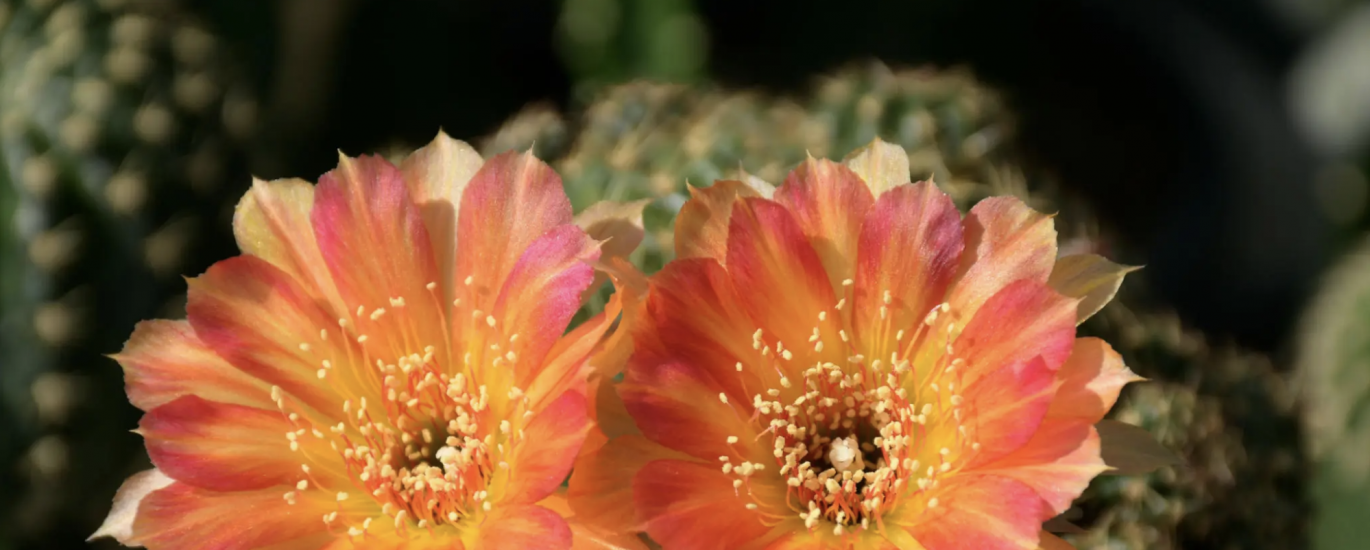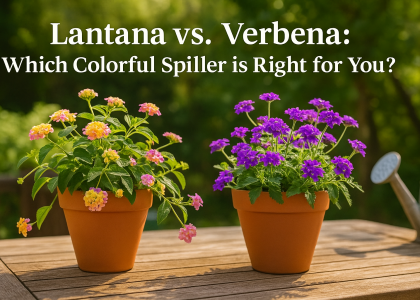Also known as Easter Lily Cactus, this garden star brings stunning blooms with minimal effort.
“When one flower fades, another rises — like a fireworks show in slow motion.”
What is Echinopsis?
Botanical name: Echinopsis spp.
Common names: Easter Lily Cactus
Plant type: Flowering globular or columnar cactus
USDA Zones: 8–11 (can be container-grown in cooler climates)

Ideal Growing Conditions
Sunlight:
- Requires full sun (6–8+ hours per day)
- Choose a south-facing spot in the garden with maximum exposure
Soil:
- Prefers sandy or gritty soil with excellent drainage
- Add gravel or pumice to avoid water retention
Temperature:
- Tolerates heat and drought extremely well
- Not frost-hardy: provide winter cover or grow in containers if below 25°F (-4°C)
Flowering Highlights
- Blooms are large, trumpet-shaped, often 4–6 inches wide
- Colors range from white, pink, orange, red to purple
- Most varieties bloom in late spring to early summer, some open at night
- Each bloom lasts 1–2 days but are frequent in succession
A blooming Echinopsis turns a quiet corner into a gallery of light.
💬 “The first time my Echinopsis bloomed, it felt like fireworks on a quiet morning.” — Julia, Arizona

How to Plant Echinopsis in Your Garden
Step-by-Step:
- Choose a well-drained sunny location with minimal lawn watering nearby
- Dig a shallow hole and mix in cactus soil or amend with sand/gravel
- Place the cactus with the root crown above soil level
- Water once lightly, then allow the soil to completely dry out before next watering
- Mulch with gravel to retain warmth and prevent rot

Watering & Maintenance
- Water only when soil is dry, typically every 2–3 weeks in hot months
- Do not water in winter dormancy unless indoors
- Avoid overhead watering to prevent fungal issues on flowers
Pruning & Propagation
- No pruning needed; remove dead blooms if desired
- Propagate easily by separating offsets (pups) at the base and replanting
Garden Safety Tips
- Use gloves or tongs when handling — spines can be sharp
- Keep away from high foot traffic areas to prevent accidental injury
Landscape Styling Ideas
- Plant in clusters along gravel pathways for desert elegance
- Combine with Aloe, Agave, or Lavender for texture and color
- Use white stones or terracotta edging to make blooms stand out
Seasonal Care Tips
| Season | Care Tip |
| Spring | Resume light watering as buds emerge |
| Summer | Peak bloom season — enjoy and observe spacing |
| Fall | Reduce watering gradually |
| Winter | Keep dry, protect from frost or bring indoors |
Frequently Asked Questions
Q: Can Echinopsis survive frost in my garden?
A: Most varieties tolerate down to 25°F (-4°C), but it's best to cover or container-plant if you live in colder zones.
Q: Why do my Echinopsis buds dry up before blooming?
A: This may be caused by inconsistent watering, sudden temperature shifts, or not enough light.
Q: How often do Echinopsis bloom?
A: Mature plants can bloom multiple times from spring through summer with strong sun and proper rest in winter.
Want a printable version?
Explore more blooming cacti for small gardens: Check our Mammillaria Indoor Guide
Few plants reward so richly for so little care. Let Echinopsis bloom bright in your garden corner.





